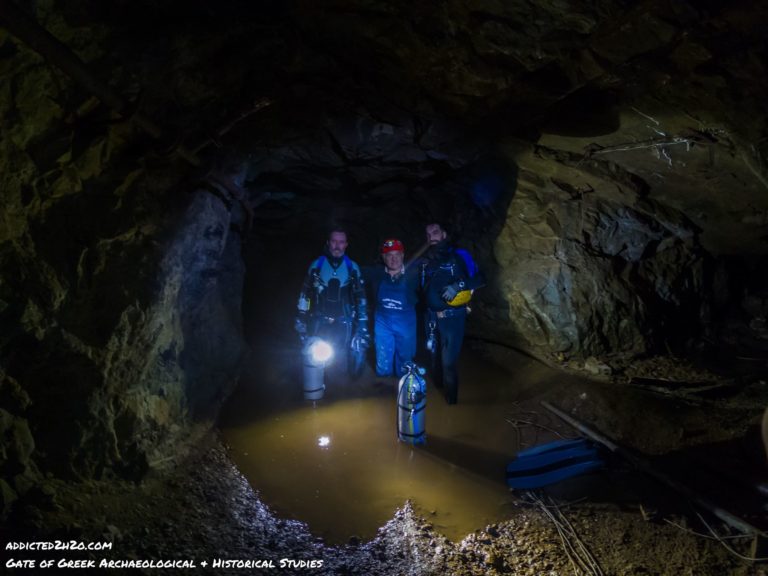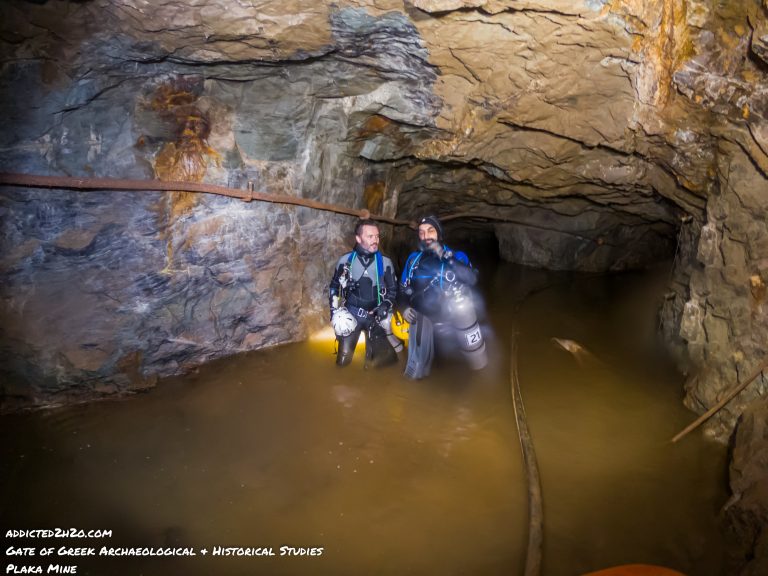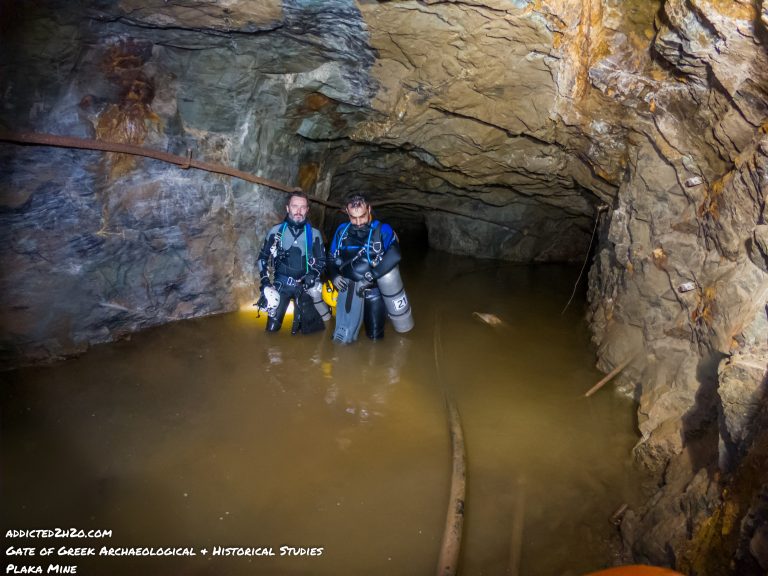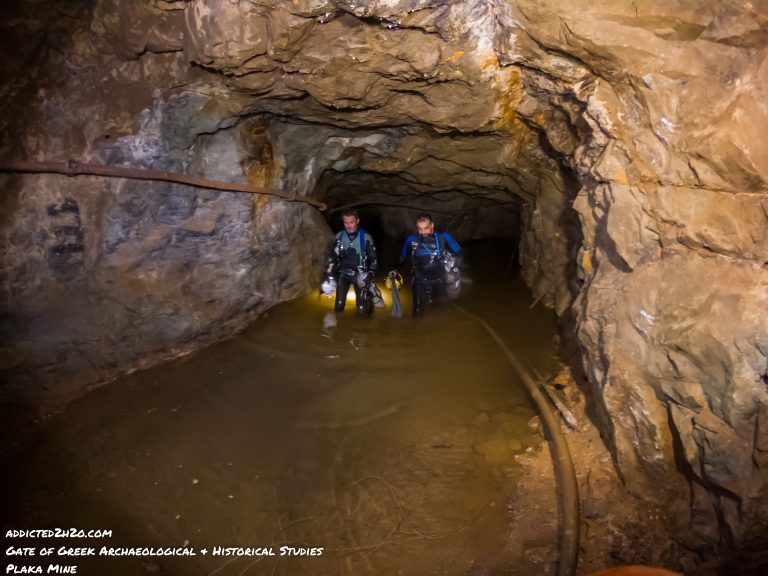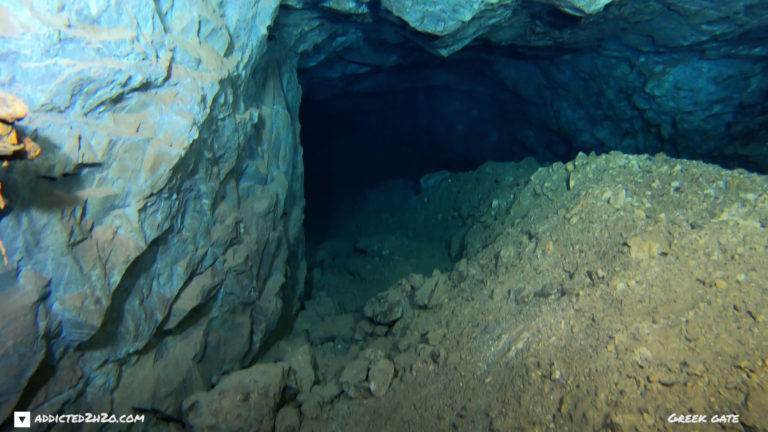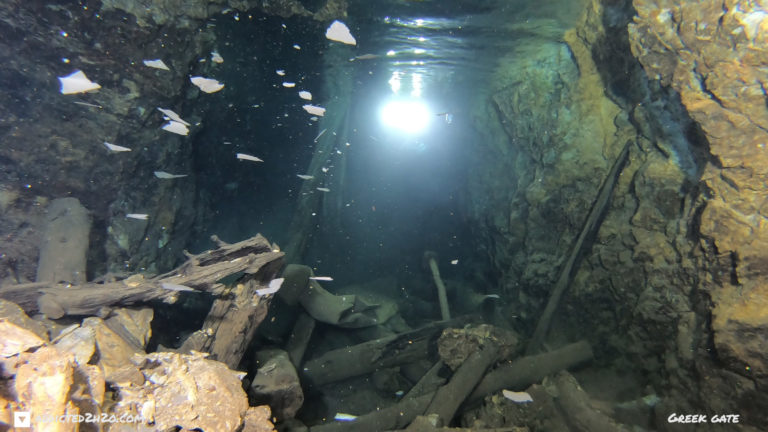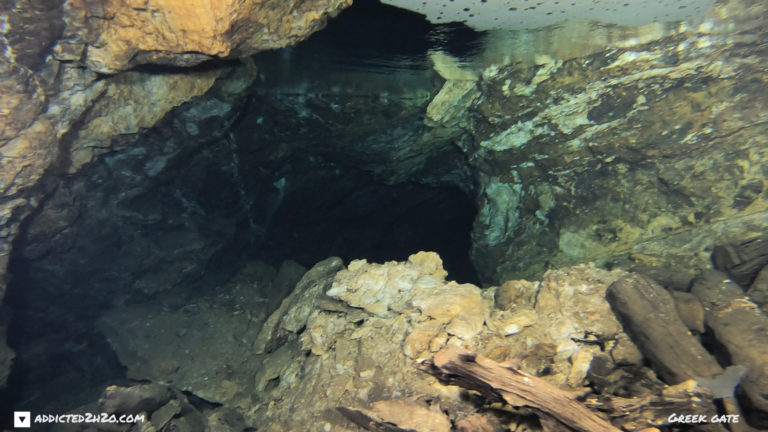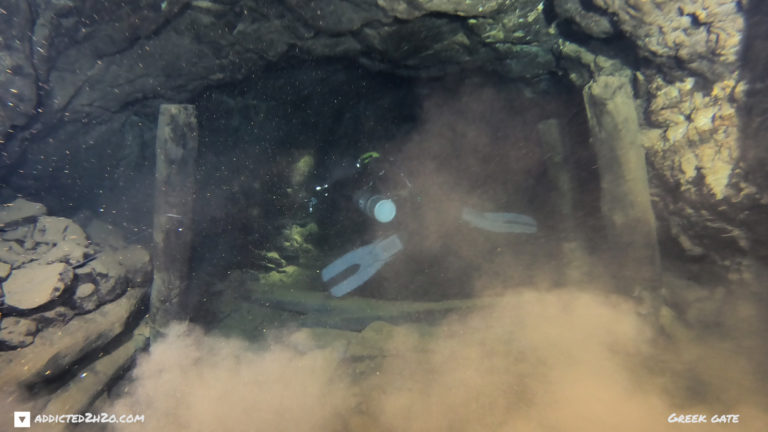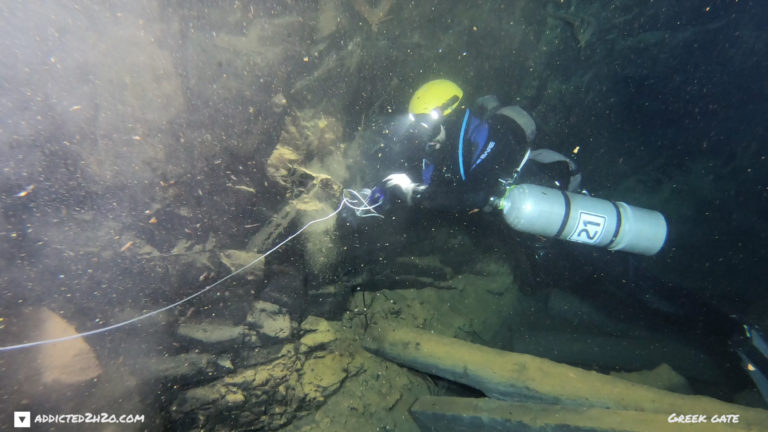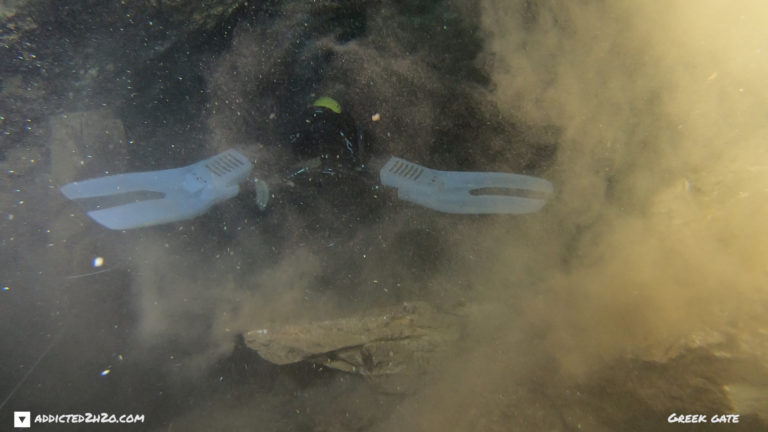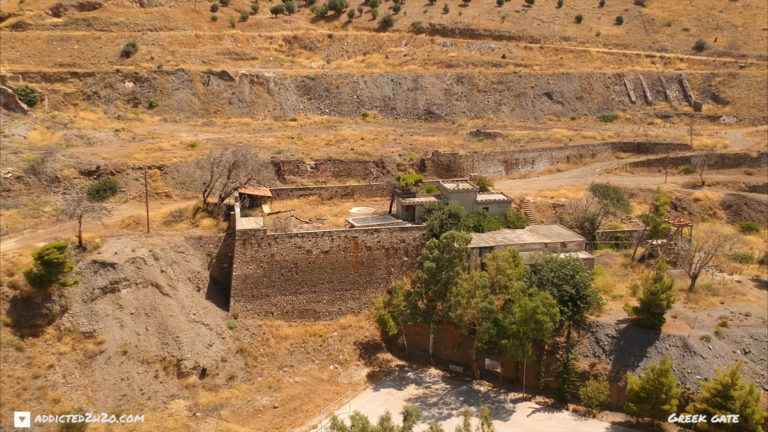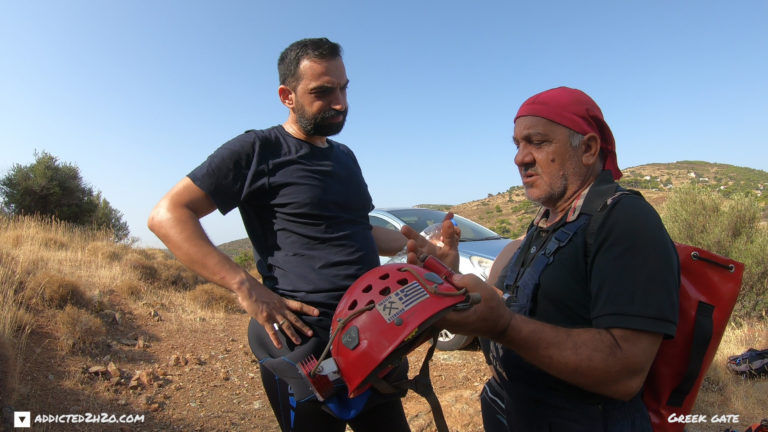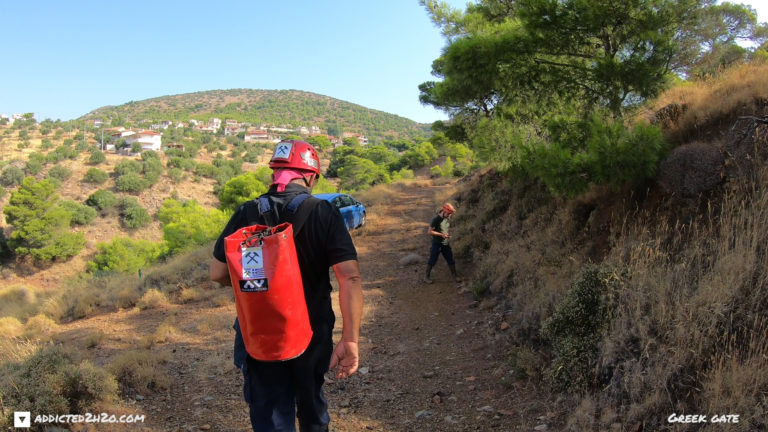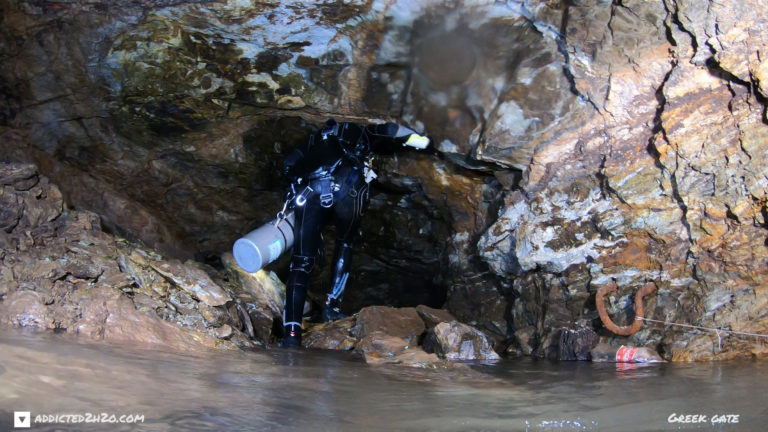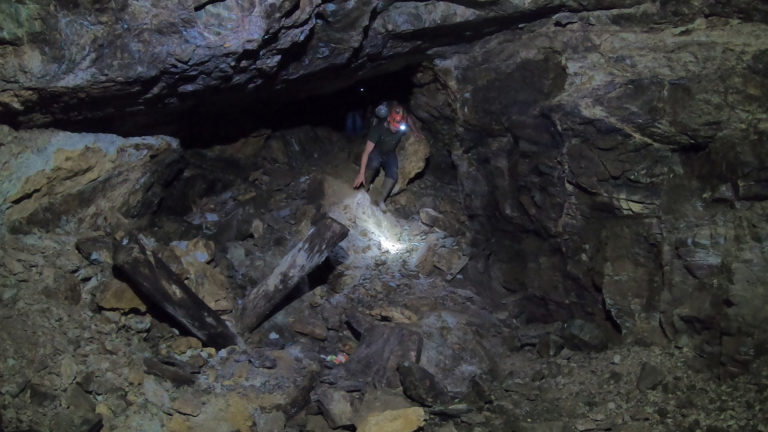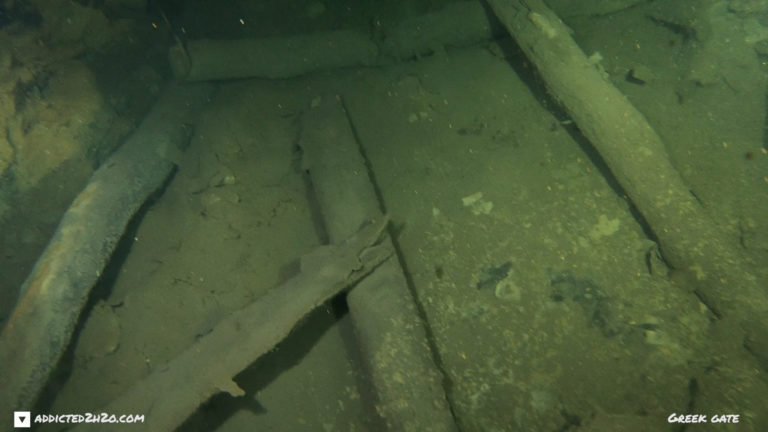Underwater Exploration
Mine Adami No2
Plaka is a village in east Attica, in the municipality of Lavreotiki. It is located between Keratea and Lavrion. For a short time in the past it had been a separate community. In 1937 Plaka is reintegrated into the community of Keratea. According to the 2011 census, its population was 558. Near the village are located the most important mines of the Lavrio mining area, operated by the French Lavrio Mining Company.
In the 5th century BC, some 11,000 people work in the metallurgical area of Lavreotiki to produce 20,000 kilograms of silver per year. 1864. The French Company (founded by Serpieris and Greek shareholders) is established and in 1867 it receives the first license to work at the ancient slags of the area from the Greek State. In 1873 the French Company is divided into two, the “Lavrion Hellenic Mining Company” (1873 – 1917) and the “Kamariza Mining Company” (1873 – 1875). In 1875 the “Lavrion French Mining Company” is established (1875 – 1981) which is essentially responsible for the revival of Lavrio out of the extensive mining activity and the founding of the Plaka and Kamariza settlements in 1880.
In the Plaka area, the second largest mining centre of Lavreotiki is located and the largest mining complex on the northern side of Lavreotiki, with extensive mining facilities. It is just 6 kilometres from the modern settlement of Lavrio and its port. According to the Historian Athanasia Markoulis-Boudiotis, the area had two main mineral deposits/veins. The first was extensive but not as rich. The second deposit/vein was scattered throughout several zones with limited continuity. Plaka surpassed the Kamariza mines as a centre of production, and had a greater variety of ores, ranging from mixed sulphides, manganese, etc. The successful extraction of the ore largely led to the construction of wells and the development for mining and other infrastructure. The ore vein tracing has been followed by a number of expeditions and drilling were made from 1885 until the 1970s. In many places, investigations grounded to a halt due to the detection of the aquifer and the intense influx of large quantities of water.
In one of these mines, after these were abandoned a long time ago, the inflow of water coming from the aquifer closed the arcades and completely sealed the deeper level. A group of explorers spotted the flooded area. In collaboration with cave divers, an exploratory dive took place and the flooded sections of the mine were first filmed in Plaka. After hiking through the muddy terrain, the team of Addicted2H2O in collaboration with the Greek Gate team, cave-geologist Panos Karoutsos and the experienced Lavrion explorer, Vasilis Stergiou, the team reached the flooded part.
The team walked through solid rock formations and a moody ground in order to reach their objective. There are two main corridors which are partly flooded, walking for a few meters until the divers must fully submerge to progress further. The divers first dived the left corridor and progressed 30 meters until reaching the point where the chamber ends. Cave line was secured and left in place throughout the entire route.
The divers then entered the corridor to the right swam for at least 30 meters until reaching an obstruction which led to a dry part of the mine. Climbed over and re-entered the water on the other side and submerged. Upon securing a cave line the divers proceeded approximately 60/70 meters until reaching the end of this chamber. Again a cave line has been secured and left in place for any future exploration.
It is worth mentioning that no line whatsoever existed, as also evident from the video. It is safe to assume this was the first time divers have explored these parts of the mine. As a consequence, these are the first underwater images from the flooded sections of the mine.
Inside both galleries, recordings of unique video and images were taken. The clarity and visibility of the water in the mine was amazing. The temperature of the water was 18 Celsius and the maximum depth was 6 meters. Percolation from the exhalation of bubbles and fin movement during exit was as expected moderate to zero visibility in some small sections.
Both branches did not extend any further into the mine, thus completing the underwater exploration at this section. Damaged columns, rail tracks and compressed air distribution pipes to provide oxygen to the arcades are some of the images seen and captured by the divers.
The Teams:
Addicted2h2o: https://addicted2h2o.com
GreekGate: https://www.facebook.com/PyleEllenikonArchaiologikonIstorikonSpoudon/
Sources:
-Lavrio Historical-Technological Cultural Park (www.Itp.ntua.gr/home_en)
-The Archaeological Guide of Thorikos (Ministry of Culture)
-Athanasia Markoulis-Boudiotis, “Lavrion French Mining Company (LFMC): Its evolution and contribution to the development of the Greek economy during the 19th and 20th centuries”, Lavreotiki Development Association 2010.
Historical Research:
Mary Fotiadi
Photography:
Mary Fotiadi
Support & Logistics:
Vasilis Stergiou (Mine Researcher & Explorer)
Panos Karoutsos (Geologist & Speleologist)
Mine Divers:
Erikos Kranidiotis, Stelios Stamatakis
Do what you can’t
